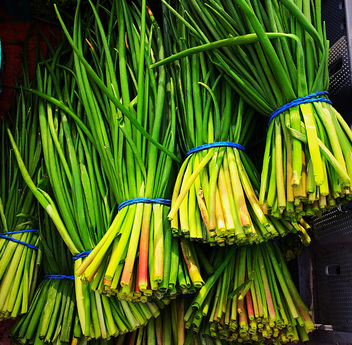 Rubber bands are one of the most convenient products invented in the twentieth century. But are they an environmental menace? And what does that have to do with Ugly Produce? Rubber bands were first patented by Stephen Perry on March 17, 1845 in London. They are used by numerous individuals and companies worldwide for a wide variety of purposes. Today you find rubber bands wrapped around your vegetables, around stacks of paper, your mail, or anything that you want to hold together as a group. All in all, more than 30 million pounds of rubber bands are sold in the United States alone each year. Although 75 percent of today's rubber products are made from the synthetic rubber perfected during World War II, rubber bands are still made from organic rubber because it offers superior elasticity. Natural rubber comes from latex, a milky fluid composed primarily of water with a smaller amount of rubber and trace amounts of resin, protein, sugar, and mineral matter. Most non-synthetic industrial latex derives from the rubber tree (Hevea brasiliensis), but various equatorial trees, shrubs, and vines also produce the substance Read more: http://www.madehow.com/Volume-1/Rubber-Band.html#ixzz4PQn7UKJJ What happens to so many rubber bands? It is speculated that most end up in the trash. The problem is that they do not decompose or cannot be recycled. The only ecological way is to reuse them. I have a drawer full of used rubber bands in my kitchen. How many can I really reuse? I always have too many. Why do I have a drawl in my kitchen? Because agriculture is the second largest user of rubber bands besides the post office. Vegetables such as celery, broccoli, beets, and asparagus, for example, are frequently bunched together with rubber bands, and the plastic coverings over berries, broccoli, and cauliflower are often secured with rubber bands. There’s no end in sight. I think I’ve witnessed the rise in the use of rubber bands over the course of my lifetime. When rubber bands are thrown in the trash, this waste often ends up in the ocean, causing harm to sea life. I have witnessed sea life entangled in rubber bands, plastic bags, plastic packing bands or six pack rings for sodas, off the coast of Santa Barbara, California. That was ten years ago on a boating excursion to view Sea Lions and Seals with the Sierra Club. That plastic and rubber trash gets stuck around them, causing bleeding sores and infections, and choking or starving them. Some had rubber bands entangled in their flippers. They get poisoned from ingesting them. Rubber bands harm small animals and beaks of birds, says the rspca.org.uk What does this have to do with ugly produce? Rubber bands seem to be everywhere. It's the little things, such as rubber bands, used in high volume. that don't decompose or that cannot be recycled, that can add up to be big environmental menaces! I know that we are advocating that imperfect produce not become food waste because of the huge environmental and emotional impact it has on our planet. But we should also think about the impact of the packaging and little things, such as rubber bands, plastic bags, clamshells, and packaging that accompany our imperfect, organic, and perfect produce, as well. Until now when I decided to speak up. Let’s Band Together! or find an alternative!
10 Comments
 by Sarah Phillips, CEO and founder, Ugly Produce is Beautiful Fruit smoothies and juices seem to be the rage - I see lots of photos of them from accounts that I follow on my @UglyProduceIsBeautiful Instagram feed. I even have a Blueberry Acai Smoothie Bowl With Grilled Peaches recipe using ugly produce posted. Smoothies and juices are for sale all over the place. But I often ask myself - how healthy are they and what do they contain? When fruit juice is made, the pulp is removed and the juice remains. The result is that the sugar is more concentrated and the juice contains little if any fiber, and food waste is created from the fruit pulp. When smoothies, on the other hand, are made, the whole fruit is used, so they maintain their fiber, even though it has been pulverized. This fiber helps slow down the absorption of fructose, the main sugar in fruit. But Robin Foroutan, a spokeswoman for the Academy of Nutrition and Dietetics, a trade group representing nutrition professionals. recommends that having that having the whole fruit is best - because it contains plenty of fiber with juice. “Juice would cause the biggest spike in blood sugar,” Ms. Foroutan said. “An all-fruit smoothie would also cause a spike in blood sugar, though probably not as much. Eating the fruit whole would have the most gentle effect.” But comparing juices to smoothies as far as calories and sugars go are pretty much neck and neck: "It’s hard to make comparisons when it comes to juice and smoothies, but an eight-ounce cup of unsweetened apple juice or orange juice contains at least 22 grams of sugar (equivalent to about five and a half teaspoons of sugar), and both contain less than a gram of fiber. A smoothie made from a banana and a cup of frozen raspberries has only slightly less sugar – about 20 grams -- but 12 grams of fiber (three grams in the banana, and nine grams in the raspberries)." And some smoothies are found to contain as many calories as the common milkshake. So don't be fooled! Source: "Are Smoothies Better for You Than Juices?" Well Blogs, New York Times, by Roni Caryn Rabin, August 5, 2016; Aug 6 9am Join UPIB and follow @UglyProduceIsBeautiful and @food on Instagram. There are hundreds of pages of recipes, tips, techniques, and food information on my site, www.CraftyBaking.com 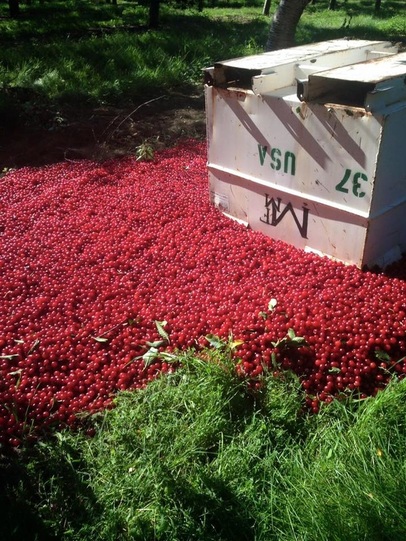 by Sarah Phillips, CEO and founder, Ugly Produce is Beautiful A Traverse City, Michigan, tart cherry farmer is leaving 14% of his crop this year to rot on the ground to comply with an industry marketing agreement intended to keep cherry prices stable. And he's not happy about it. "These cherries are beautiful!" Santucci posted with the photo. "But, we have to dump 14% of our tart cherry crop on the ground to rot. Why? So we can allow the import of 200 million pounds of cherries from overseas! It just doesn't seem right." This blatant type of food waste with perfectly good produce is what Ugly Produce is Beautiful is trying to make the public aware of, so we can make change to this hideous system. I agree with the Detroit Free Press that Santucci could have worked with the board to find a place to donate the surplus cherries, which typically aren't eaten raw like sweet cherries because of their very short shelf-life, but are instead used in products such as pie filling and jams. But the overall United States system of dumping produce to keep prices stable and to allow for foreign imports, has to change. We started Farmer Share as a small step towards selling ugly produce from the farm that would otherwise go to waste. We know that our initiative will grow through time. Join UPIB and follow @UglyProduceIsBeautiful and @food on Instagram. There are hundreds of pages of recipes, tips, techniques, and food information on my site, www.CraftyBaking.com 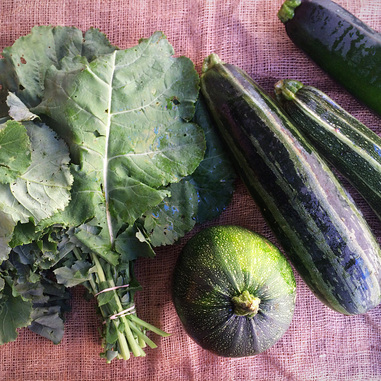 by Sarah Phillips, CEO and founder, Ugly Produce is Beautiful We are part way through our New York City's summer Our Farmer Share! It's time to sign-up for our FALL FARMER SHARE! Local Roots NYC has partnered up with Ugly Produce is Beautiful to bring you OUR FARMER SHARE: 3lbs of produce each week that are slightly scarred or bruised but still beautiful despite what traditional markets tell us and still perfect to cook with. You’ll receive 2-3 varieties of vegetables selected by our lovely farmers at a price that’s under retail value. With OUR FARMER SHARE, you’ll get extra items to cook with while our farmers can get more out of their bounty. Why should you join a CSA? What is OUR FARMER SHARE? Join UPIB and follow @UglyProduceIsBeautiful and @LocalRootsNYC on Instagram.  by Sarah Phillips, CEO and founder, Ugly Produce is Beautiful Organic food may be a little more expensive, but its benefits far outweigh the cost. More and more consumers are switching to organic foods due to the many benefits it offers. Organic agriculture is an ecological production management system that promotes and enhances biodiversity, biological cycles and soil biological activity. It is based on minimal use of off-farm inputs and on management practices that restore, maintain and enhance ecological harmony. Organic food is produced without using most conventional pesticides; fertilizers made with synthetic ingredients or sewage sludge; bioengineering (GMOs); or ionizing radiation. Non-organic practices leave a chemical residue on the produce that sometimes penetrates the skin as well. Contrary to popular belief, washing the food doesn’t remove all of them. Since organic foods are grown without using chemicals, you can be assured that these harmful synthetic cancer-causing materials won’t accumulate in your body. NOTE: Organic agriculture practices cannot ensure that products are completely free of residues; however, methods are used to minimize pollution from air, soil and water. Organic farms have to meet strict guidelines in their farming methods. If there’s a certified organic on the food you are eating, you’re assured that the food has been carefully grown and its source has been certified and inspected by an Organic Certification Body. The USDA National Organic Program is the only system in the U.S. that provides certified standards for organic food. Foods labeled "USDA Organic" are the gold standard for health and sustainability. Organic food is produced by farmers who emphasize the use of renewable resources and the conservation of soil and water to enhance environmental quality for future generations. When produce in the field is sprayed with chemicals, the pesticide that drifts in the air can contaminate a wide area beyond the farm. Water run-off carrying chemicals can contaminate a water system for a community. Growing organic produce also means that dangerous pesticide drift and chemical runoff will not harm your community. Source: What is organic production? Join UPIB and follow @UglyProduceIsBeautiful and @food on Instagram. There are hundreds of pages of recipes, tips, techniques, and food information on my site, www.CraftyBaking.com 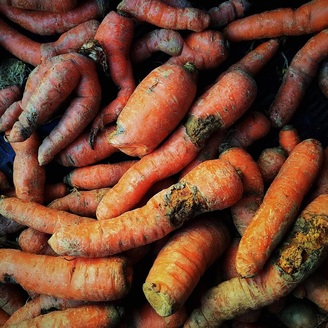 by Sarah Phillips, CEO and founder, Ugly Produce is Beautiful Food waste at the retail and consumer levels is particularly prevalent in the United States. We waste about 130 billion pounds of food in America each year. A recent survey, shows that half of us are aware of the scale of this $160 billion problem.. Almost 80 percent said they feel guilty when throwing food away, but 51 percent said it would be difficult to reduce household food waste. And 42 percent said they don’t have enough time to worry about it. In addition, the study found that In particular, many aren't aware that food that ends up in landfills contributes to the release of methane, a major contributor to global warming. Not to mention all the fuel and fertilizer expended in food production that could be saved if we just ate everything on our plate. We have to be encouraged, though. Although the percentage of Americans who say they’re willing to change behavior seems small, Dana Gunders, a food waste expert from the NRDC (National Resources Defense Fund, said the progress is encouraging. Four years ago, she said “nobody was talking about the issue and nobody was thinking about it,” she said. “To have over half the population think food waste is a serious problem is a tremendous achievement in terms of public awareness.” Source: Bloomberg News Join UPIB and follow @UglyProduceIsBeautiful and @food on Instagram. There are hundreds of pages of recipes, tips, techniques, and food information on my site, www.CraftyBaking.com 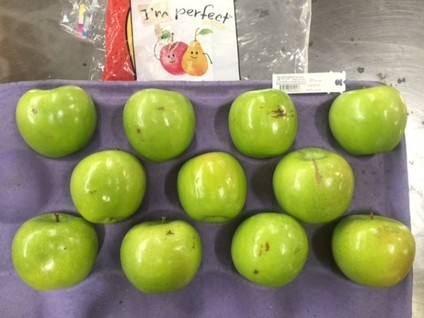 by Sarah Phillips, CEO and founder, Ugly Produce is Beautiful This week, a brand of apples from Washington state, called “I’m Perfect,” will make its debut in 300 Walmart stores in Florida as a test run. This is part of their mission to help stop food waste. Apples can become ugly from a hailstorm, high winds or even a string of very hot sunny days. This can damage the exterior skin of fruits. While the texture and flavor remain perfect, the exterior damage usually renders these fruits unsellable in the fresh market because they fail to meet traditional grade standards. Imperfect produce often ends up in landfills instead, contributing to food waste, which, in turn, is a major source of methane greenhouse gas emissions. For apples, blemish-related losses can reach as high as 30 percent, according to data from Columbia Marketing International that Wal-Mart cites, but no one really has a good handle on the exact statistics. This is a big giant step in the right direction to help alleviate food waste.! The next big step will be for WalMart to source locally, such as selling ugly Florida oranges in their Florida stores, for example. That would be huge! Consumer food waste in our industrialized nation is the biggest piece of the problem. That's what we aim to help reduce through our recipes, education, and how tos. What do you think? Read some comments already post on my @UglyProduceIsBeautiful Instagram account. Join UPIB and follow @UglyProduceIsBeautiful and @food on Instagram. There are hundreds of pages of recipes, tips, techniques, and food information on my site, www.CraftyBaking.com  by Sarah Phillips, CEO and founder, Ugly Produce is Beautiful Over half of all US households now purchase organic produce, according to the Organic Trade Association's presentation at the Organic Produce Summit. Organic banana purchases led the charge, growing by more than 30 percent last year, followed by blackberries (up 61%), organic salad greens and organic baby carrots (sales up 11% each), and organic Pink Lady Apples (up 96%), Organic "value-added" vegetables, defined as cubed squash, already peeled and chopped carrots and ready-to-use sliced mushrooms, grew by a whopping 54 percent in 2015 to almost $150 million. Since 2011, the sales of produce in this country have increased over 25 percent, with the greatest increase in the organic segment occurring in 2015. Convenience, a greater awareness of the health benefits of produce, and an increased interest in local food sources largely contributed to the increase. And driven by the desire to improve upon already healthy food choices, organic fruit sales have soared 123 percent during that time, while organic vegetable sales have jumped by 92 percent. "Data show that the organic shopper is an extremely health-conscious consumer who is completely dedicated to eating fresh fruits and vegetables. Organic is a top choice because of the confidence in organic as THE choice to avoid foods grown with toxic and persistent pesticides." Go eat your fruit and vegetables - I mean, the organic ones! Look for the USDA Organic seal on your produce before you buy. Join UPIB and follow @UglyProduceIsBeautiful and @food on Instagram. There are hundreds of pages of recipes, tips, techniques, and food information on my site, www.CraftyBaking.com  by Sarah Phillips, CEO and founder, Ugly Produce is Beautiful Our preference for prettiness reaches into every area of our lives, including food. “Several studies have shown that how foods are presented can influence our liking for them,” said Debra Zellner, a professor of psychology at Montclair State University in New Jersey. In a 2014 study published in the science journal Appetite, Zellne served study participants two chicken meals prepared by chefs, but was presented in two different ways on two different nights - one was plated less attractive than the other. Although the two presentations were judged as equally “neat”, one was judged as more attractive:
The conclusion they reached was that: "How attractively food is plated can affect liking for the flavor of the food and could be used to increase acceptance of 'healthy' foods." It's been said often that we eat with our eyes first. What about applying the same techniques to increasing the public acceptance of ugly produce? I strongly believe that by showing you how to cook and bake attractive recipes with ugly and imperfect produce will help increase its acceptance at the marketplace. I also believe in educating you about the problem, and giving you at home skills to help you prevent food waste. If we all do our collective part, I believe that change can come about. That's why giving recipes and tips and techniques are so important with this campaign; they put the skills in our hands so each one of us can rescue food from our kitchen counter and fridge that might otherwise go to waste. There are hundreds of pages of recipes and food information also on my site, www.CraftyBaking.com Join UPIB and follow @UglyProduceIsBeautiful and @food on Instagram.  Baker Creek Heirloom Seeds carries one of the largest selections of seeds from the 19th century, including many Asian and European varieties - some 1,800 varieties of vegetables, flowers and herbs. This is so important because the company has become a place to promote and preserve our agricultural and culinary heritage. Founded by Jere Gettle in 1998, and now joined by his wife Emilee and children, It is their goal to educate everyone about a better, safer food supply and fight gene-altered frankenfood and the companies that support it. They also work extensively to supply free seeds to many of the world’s poorest countries, as well as here at home in school gardens and other educational projects. They have a large mail order catalogue, magazine, and two store locations - the Baker Creek Seed Store headquarters in Mansfield, MO, and a second one in Sonoma County, CA, in the beautiful town of Petaluma When I contacted Baker Creek Heirloom Seeds to sponsor our Ugly Produce Beauty Pageant on September 17, in Petaluma, CA, they enthusiastically said YES! Ugly Produce is Beautiful is partnering with the California Farmers' Guild to host the Ugly Produce Beauty Pageant during the Farmer Olympics. We couldn't be more pleased! We look forward to having more co-branded partnerships to help further our cause. Please contact me at [email protected] if interested. Thanks! Join UPIB and follow @UglyProduceIsBeautiful and @food on Instagram. |
UPIB BLOGWelcome to the Ugly Produce is Beautiful Blog where we discuss important topics. Archives
November 2016
Categories |
|
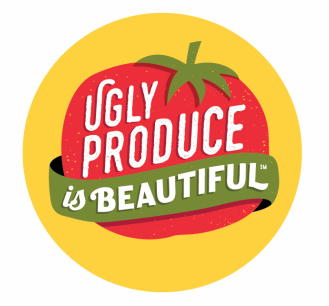
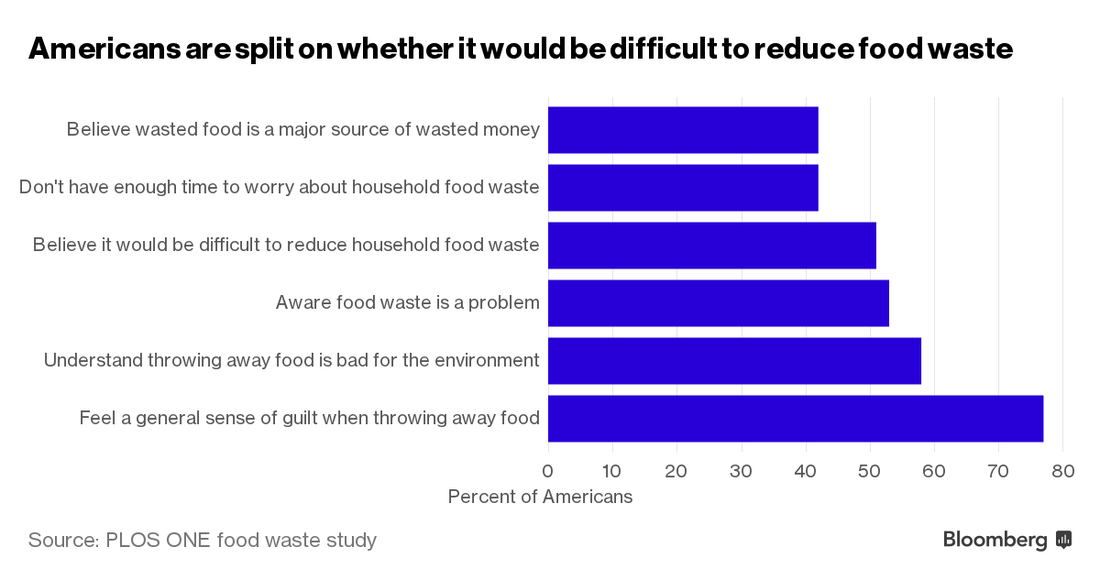

 RSS Feed
RSS Feed
